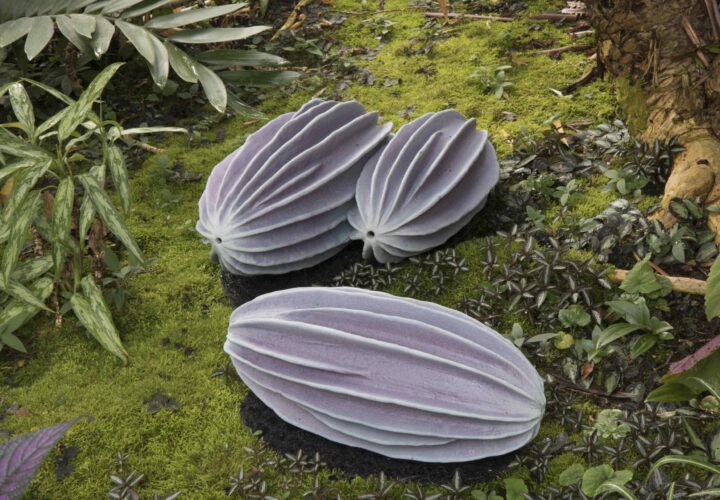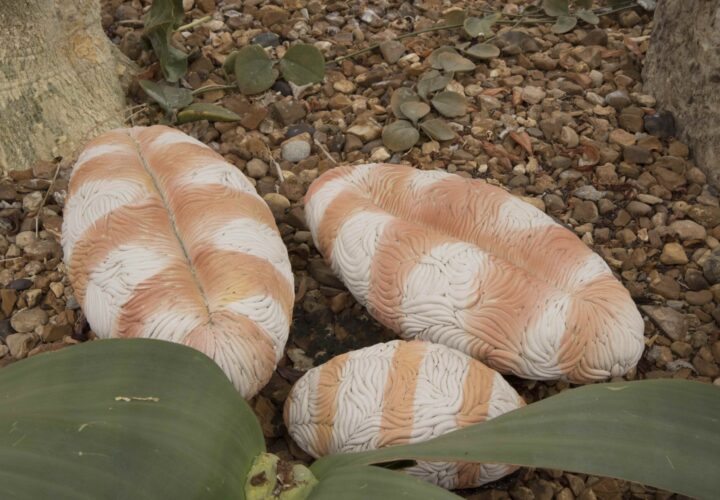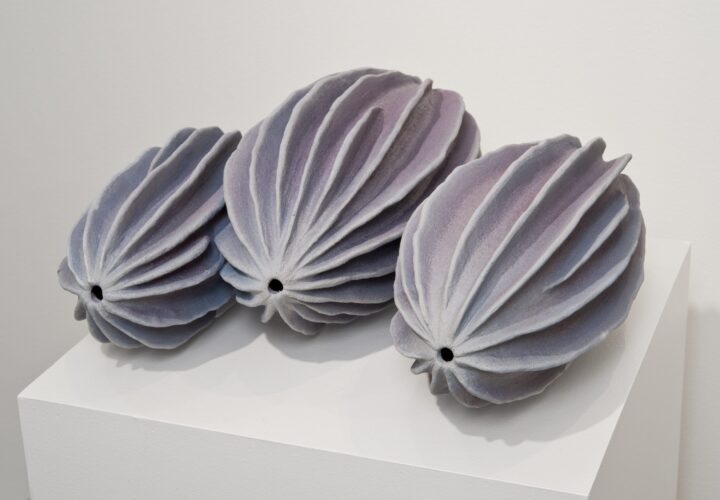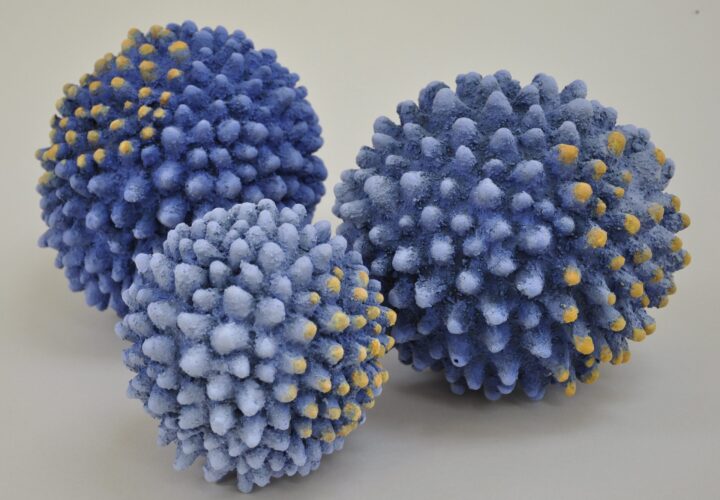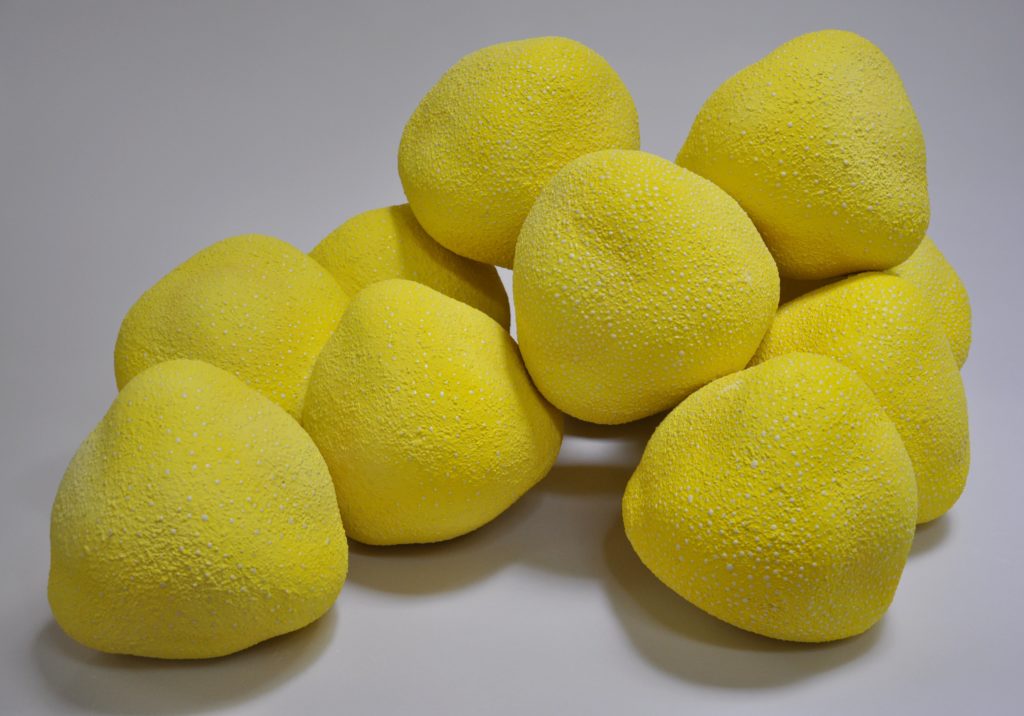
Susan E. Crowell was born and raised in Michigan, and has taught ceramics at the Penny W. Stamps School of Art and Design at the University of Michigan for 14 years. Here, she discusses how she chose her medium, why she connects with certain color palettes, and what attracts her to pollen and bee culture.
“According to family lore, my maternal grandfather’s people were factory workers in the British pottery industry. My grandmother appreciated and collected ceramics and crockery, and as a child I spent a lot of time at her house. My favorite thing was when she would pull out some clay and we would make animals, bowls, and plates, and I knew early on that I wanted to pursue ceramics. The earthy smell of the dust and eventually the ceramics studio drew me powerfully.
At some point about 20 years ago, I started having very bad headaches. In my study of migraines and pain perception, I found that much of chronic pain originates with nociceptors, the neuroceptors that transmit pain. So I started imagining and making forms of what they might look like. My color palette became brighter and brighter as a result. I discovered that through the process of trying to describe the colors, textures, flavors, and movements of my headaches, I could change my relationship to the pain. The act of describing made me a protagonist, and I no longer became the subject of the pain. I no longer get headaches.
As a result of keeping bees, off and on, for more than thirty years, I became interested not only in the bees, but also in their health and processes, the honeycomb, the matrix and the beauty of the hive. A friend gave me a copy of Kessler and Hartley’s Pollen, a book of pollen images based upon electron microscopy. I was captivated by their forms, and decided to translate them into ceramic terms. In the book, pollen grains had been flattened out in the process of electron microscopy for the purpose and by the process of photography, and I wanted to recover their three-dimensional nature. Since then, having explored this project for over seven years, I have made more than 21 groups of different varieties of pollen. Electron microscopy images appear in black and white, and I have transposed them into sculptures, using colors sourced from their flowers, as well as from my imagination. My friends in the sciences have ragged on me more than once that my work isn’t to scale. Perhaps I will address that in the future.
In Western Michigan, where I grew up, fruit is a big crop, and depends upon healthy bees for pollination and agricultural production. Not only are imported, cultivated Italian honeybees under threat: feral and native bees are in decline, too. Finding ways to support them is essential. I keep bees not because I like honey but because I love bees. They are more than a hobby or pet for me: as their steward, it’s my role to help them survive and to give them ways to multiply. This stewardship extends to my work in ceramics, and I hope the pollen forms inspire others to keep in mind the small but critically important creatures that sustain us.”

